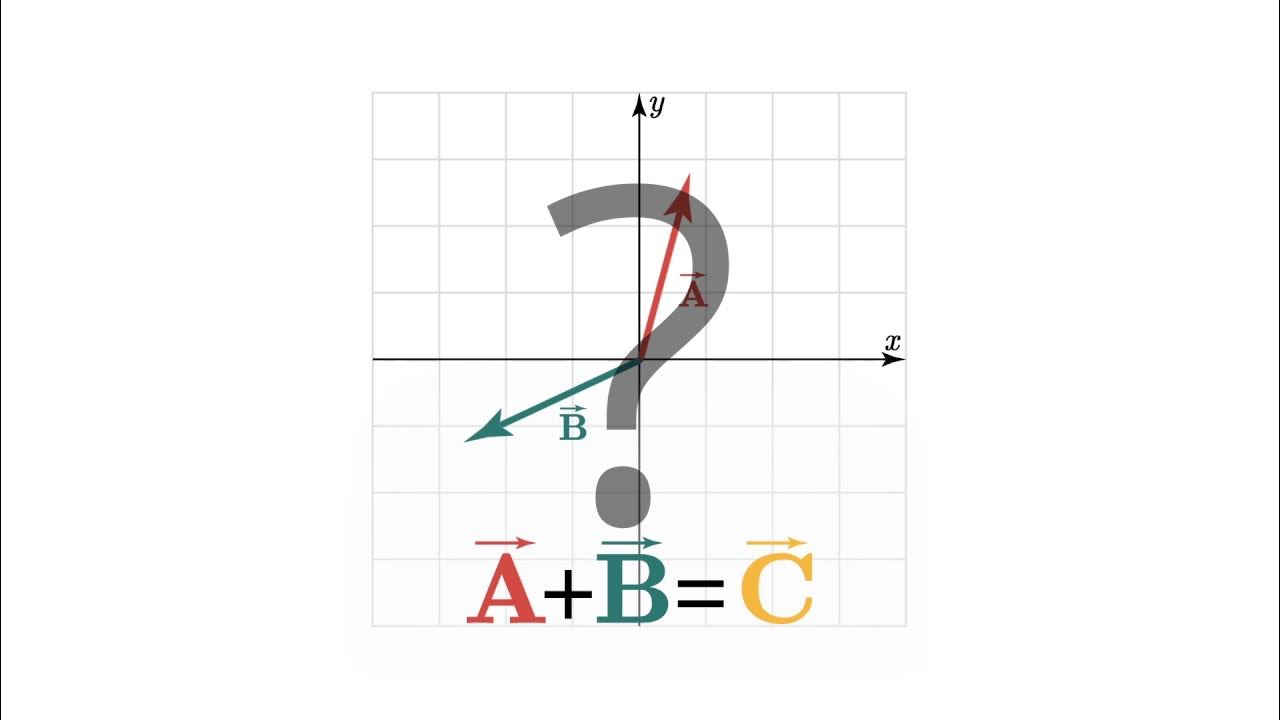Vektor (part 5) - Penjumlahan Vektor Metode Jajargenjang
Summary
TLDRThis video explains vector addition and subtraction using the parallelogram method. It demonstrates how two vectors, A and B, are combined to find their resultant vector by drawing them with the same starting point and completing a parallelogram. The diagonal of the parallelogram represents the resultant vector, and its magnitude can be calculated using the equation: A + B = √(A² + B² + 2AB cosα). The video also explains vector subtraction by reversing the direction of one vector and drawing the parallelogram again to determine the difference. Examples using numerical values illustrate the process.
Takeaways
- 😀 The Parallelogram Method helps in vector addition by drawing two vectors with a common starting point.
- 😀 The first step in vector addition is to draw the vectors so that their starting points coincide.
- 😀 A parallelogram is drawn using the two vectors as its sides to visualize the resultant vector.
- 😀 The diagonal of the parallelogram represents the resultant vector of two vectors.
- 😀 The length of the resultant vector is calculated using the formula: √(a² + b² + 2ab cos(α)).
- 😀 In vector subtraction, the direction of one vector is reversed, and the same steps are followed to calculate the difference.
- 😀 The magnitude of the resultant vector in subtraction can also be determined using the same formula: √(a² + b² - 2ab cos(α)).
- 😀 An example of vector addition with magnitudes of 6 and 4 units and an angle of 60° is provided to demonstrate calculations.
- 😀 The result for the vector addition example is √76, which simplifies to 2√19 units.
- 😀 Similarly, for the vector subtraction example, the result is √28, simplifying to 2√7 units.
Q & A
What is the purpose of the parallelogram method in vector addition?
-The parallelogram method is used to determine the resultant vector of two vectors by drawing them such that their starting points coincide, forming a parallelogram. The diagonal of this parallelogram represents the resultant vector.
How do you draw the parallelogram for vector addition?
-To draw the parallelogram, you start by plotting the two vectors with their starting points coinciding. Then, you draw lines parallel to each vector to form a parallelogram, with the diagonal being the resultant vector.
What does the length of the diagonal in the parallelogram represent?
-The length of the diagonal of the parallelogram represents the magnitude of the resultant vector, which is the sum of the two vectors being added.
What formula is used to calculate the magnitude of the resultant vector in vector addition?
-The magnitude of the resultant vector can be calculated using the formula: a + b = √(a² + b² + 2ab * cos(α)), where 'a' and 'b' are the magnitudes of the two vectors, and α is the angle between them.
How do you calculate the magnitude of the resultant vector when the vectors are in the same plane?
-If the vectors are in the same plane, you substitute the known values of the magnitudes of the vectors (a and b) and the angle (α) into the formula: a + b = √(a² + b² + 2ab * cos(α)), and perform the calculations.
What is the process to find the result of vector subtraction using the parallelogram method?
-To find the result of vector subtraction, you reverse the direction of the second vector (vector b) and then follow the same steps as for vector addition. The resultant vector is the diagonal of the parallelogram formed by the two vectors.
What formula is used to calculate the magnitude of the difference between two vectors?
-The magnitude of the difference between two vectors can be calculated using the formula: a - b = √(a² + b² - 2ab * cos(α)), where 'a' and 'b' are the magnitudes of the vectors, and α is the angle between them.
How does the angle between the vectors affect the magnitude of the resultant vector?
-The angle between the two vectors (α) affects the magnitude of the resultant vector. When the angle is smaller, the vectors add more constructively, resulting in a larger magnitude. When the angle is larger, the vectors add more destructively, leading to a smaller magnitude.
How do you calculate the magnitude of the resultant vector in an example where vector a = 6, vector b = 4, and α = 60°?
-Using the formula a + b = √(a² + b² + 2ab * cos(α)), substitute the values: a = 6, b = 4, and α = 60°. This gives a + b = √(36 + 16 + 24), which equals √76 or approximately 2√19.
How do you calculate the magnitude of the difference between the same vectors in the example where a = 6, b = 4, and α = 60°?
-Using the formula a - b = √(a² + b² - 2ab * cos(α)), substitute the values: a = 6, b = 4, and α = 60°. This gives a - b = √(36 + 16 - 24), which equals √28 or approximately 2√7.
Outlines

此内容仅限付费用户访问。 请升级后访问。
立即升级Mindmap

此内容仅限付费用户访问。 请升级后访问。
立即升级Keywords

此内容仅限付费用户访问。 请升级后访问。
立即升级Highlights

此内容仅限付费用户访问。 请升级后访问。
立即升级Transcripts

此内容仅限付费用户访问。 请升级后访问。
立即升级浏览更多相关视频

Fisika SMA - Vektor (3) - Penjumlahan Vektor Metode Jajar Genjang (I)

H1.2 Rekenen met vectoren

Operasi Vektor Secara Analitik dan Geometri (Vektor Bagian 3) Matematika Peminatan Kelas 10

Parallelogram Law of Vector Addition | Infinity Learn

0.2 Vector Operators

Vektor Matematika Kelas 10 • Part 3: Penjumlahan & Pengurangan Vektor
5.0 / 5 (0 votes)
